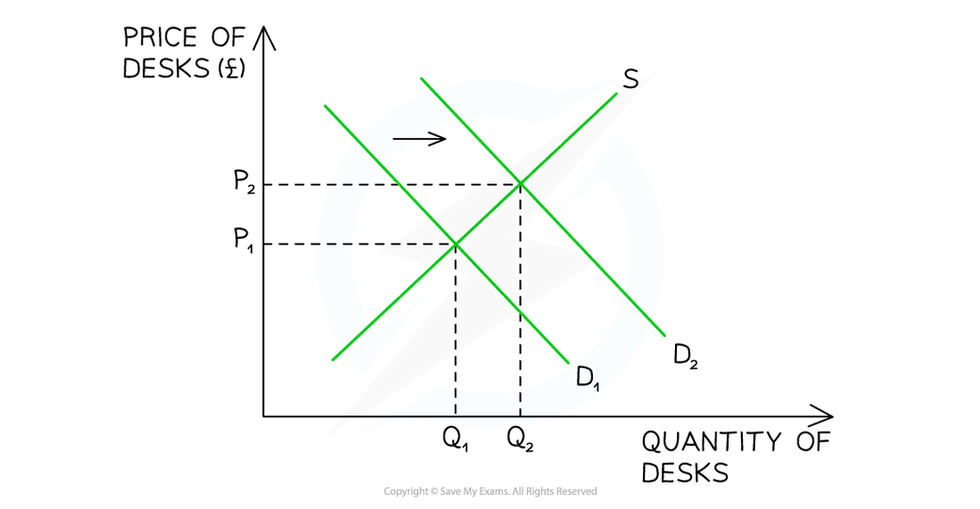Causes and Consequences of Price Changes
Real world markets are constantly changing and are referred to as dynamic markets.
Market equilibrium can change every few minutes in some markets (e.g. stocks and shares), or every few weeks or months in others (e.g Clothing).
Any change to a condition of demand or supply will temporarily create disequilibrium and market forces will then seek to clear the excess demand or supply.
Real world example: changes to demand that increase price
During lock downs associated with the Covid-19 pandemic, furniture retailers experienced unexpectedly high demand for their products (especially desks and sofas).
Diagram showing an increase in demand for desks due to a temporary change in tastes/fashions
Diagram analysis
Due to the Covid mandated change of working from home, consumers experienced a temporary change in taste as they sought to set up comfortable home offices.
*This led to an increase in demand for desks from D1→D.
At the original market clearing price of P1, a condition of excess demand now exists.
*The demand for desks is greater than the supply.
In response, suppliers raise prices
*This causes a contraction of demand and an extension of supply leading to a new market equilibrium at P2Q2.
*Both the equilibrium price (P2) and the equilibrium quantity (Q2) are higher than before.
*The excess demand in the market has been cleared.






What role do technological advancements play in altering market conditions?
How can businesses adapt to rapidly changing market environments?
What impact do government policies and regulations have on market conditions?
How do global events, such as pandemics or geopolitical conflicts, influence market dynamics?
What are the effects of changing consumer preferences on market conditions?
How do changes in market conditions affect pricing strategies for businesses?
What are some examples of industries that have successfully navigated changing market conditions?